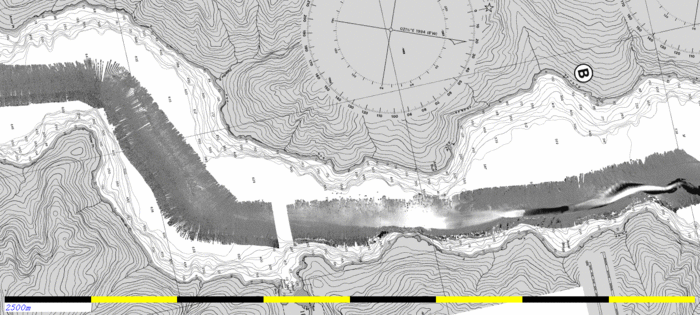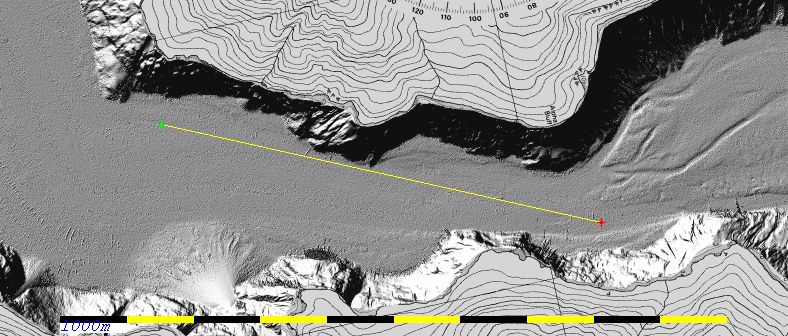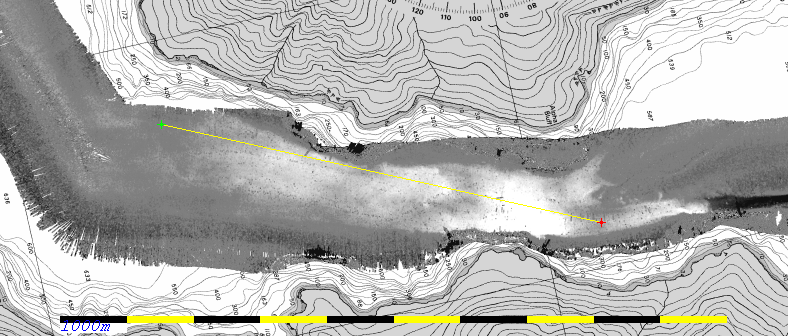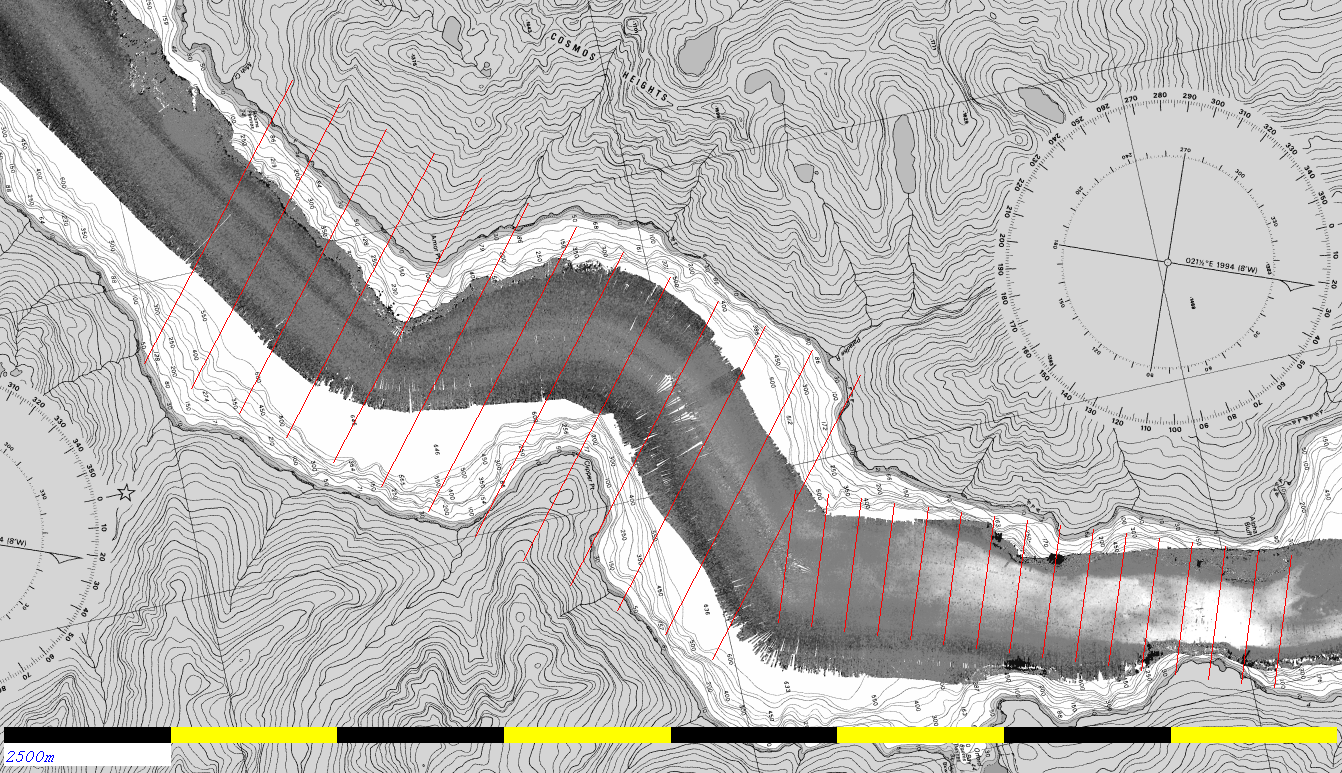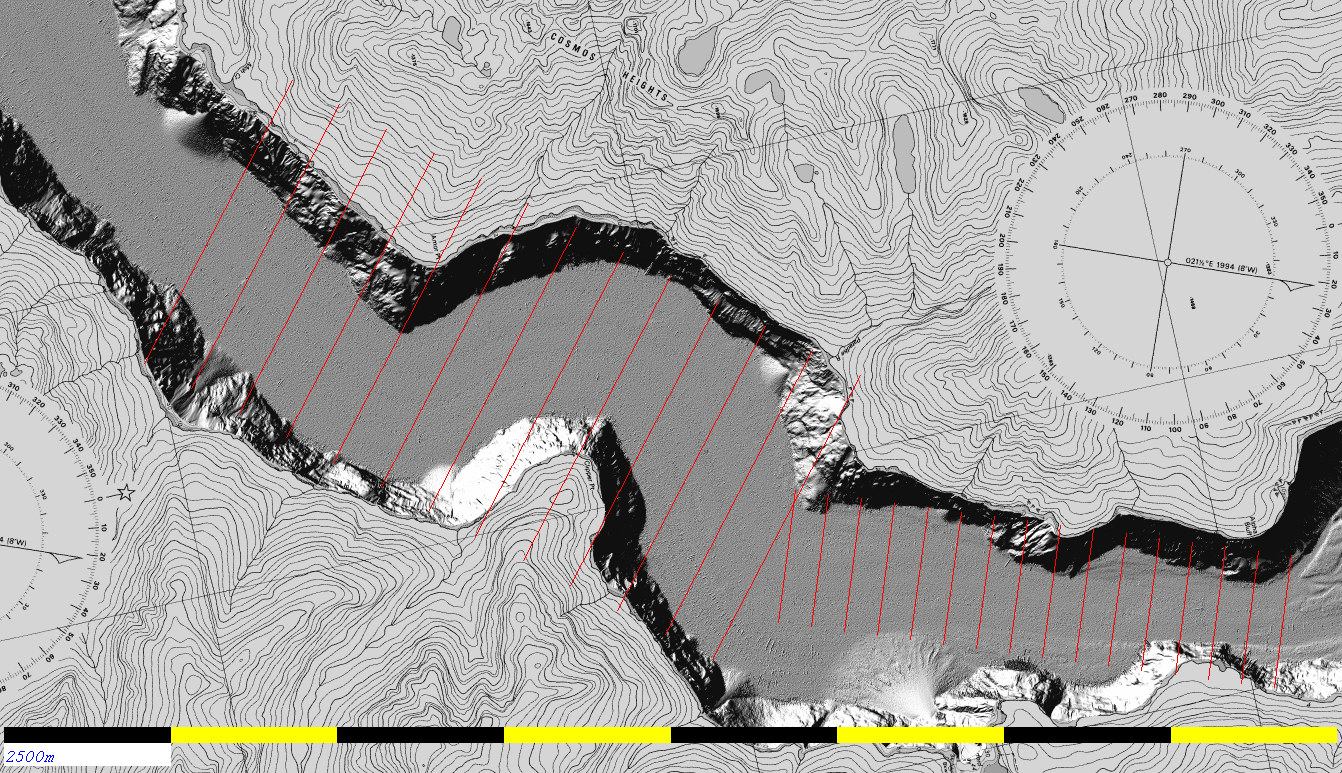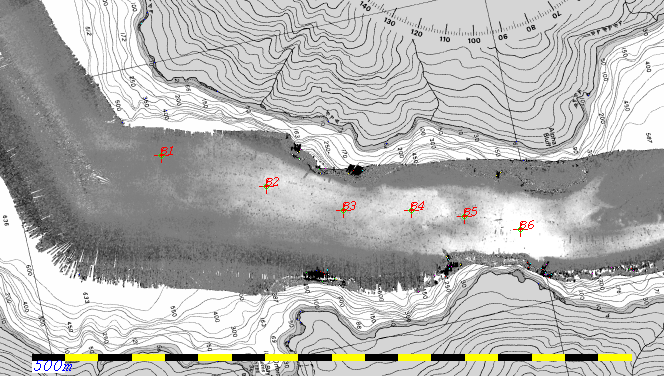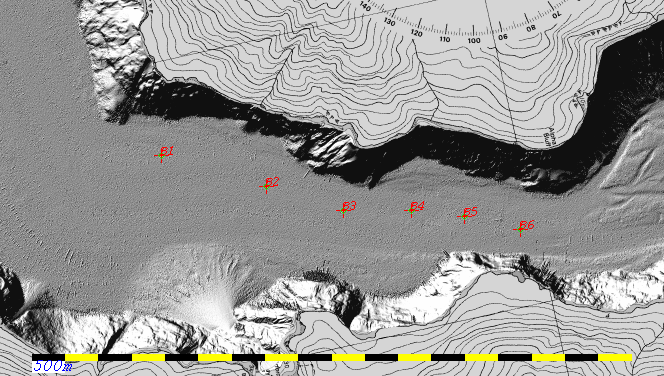Downstream of the Orford River Fan.
The image shows the 2008 coverage (as it is the most extensive). As can be seen the channel system dies out about 3 miles north of the Orford River fan).
The only channel that is active since 2008 is the eastern channel (bottom in this rotated projection). The channels to the west, which were interpreted as active in the 1980's based on the Prior et al. sidescan surveys, appear to be no longer utilized.
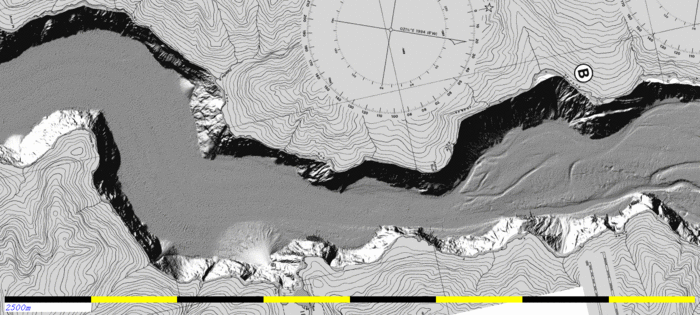
Greyscale for this and plots below is from <= -4m (erosion, black) to >= +4m (deposition, white).
As can be seen, downstream of the last defined channel, the deposition has covered the fjord floor nearly uniformly from wall to wall.
The deposition however is not a uniformly thinning drape as one moves down the fjord. There are clear thickening and thinning patches.
Also note that the fill appears to slightly back up the abandoned channel system to the west (top in this rotated figure). This could be evidence of overbank flow moving there, or deposition from the channelized flow that spread extremely rapidly once it lost the channel wall constraints.
Note there are some artefacts on the southernmost (left edge in this rotated view) difference map. When operating in Very Deep Mode, single swath is used and the outermost sectors have differing frequencies. The port outermost sector is the lowest frequency and appears to penetrate at least an extra ~ 30cm deeper into the soft sediment of the fjord floor than the Deep Mode outer sectors (which, as dual, alternate between frequencies).
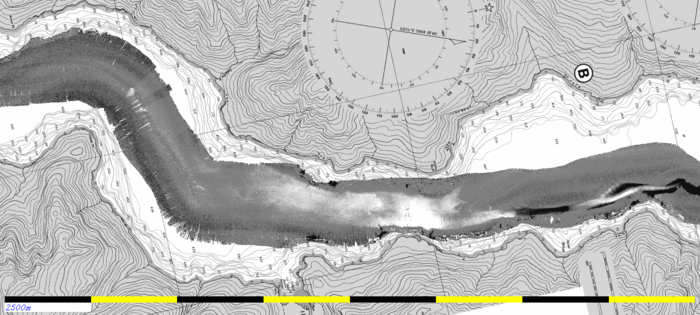
As can be seen, during the first three freshets, while clear changes on the channelized section are apparent, almost no discernible difference is apparent on the proximal lobe just downstream of the last channel relief.
This suggests that no significant flows exited the channel mouth over those three active years. This would imply that there is significant year-to-year variability in the flows that make it all the way to the lobe.
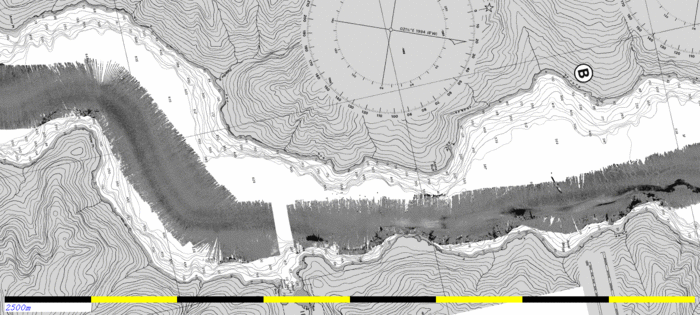
As can be seen, unlike the previous three year epoch, in this case there is clearly deposition beyond the channel mouth. The discernible extent of that deposition is restricted to the width of the 2010 transit swath.
But the accretion pattern appears to be almost identical to that seen from the 6 freshet difference, suggesting that almost all the lobe accretion has occurred in the last three years.
